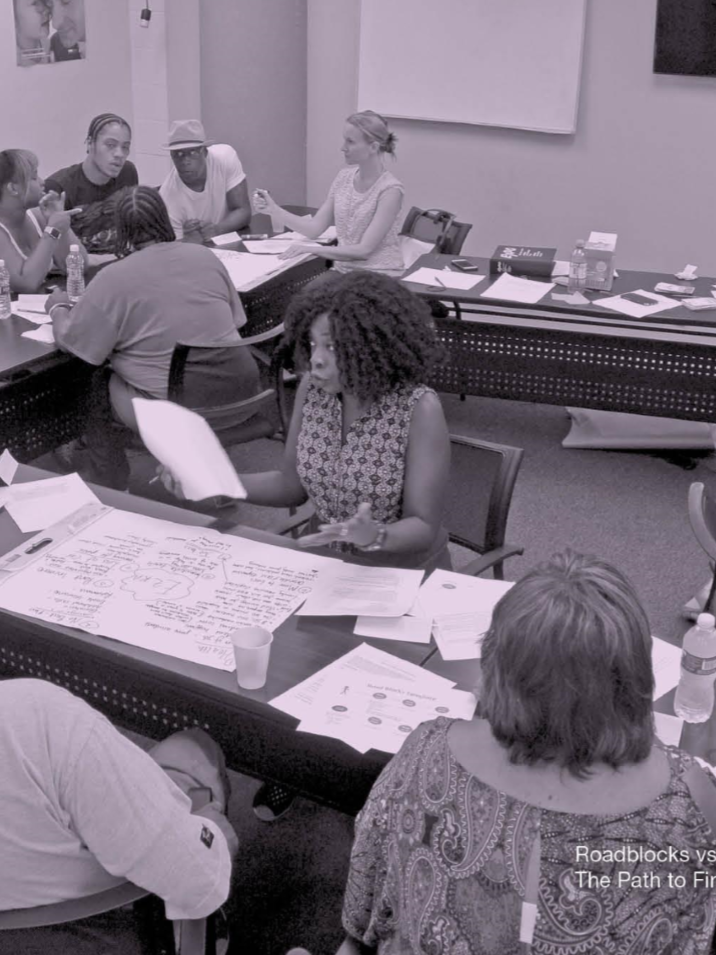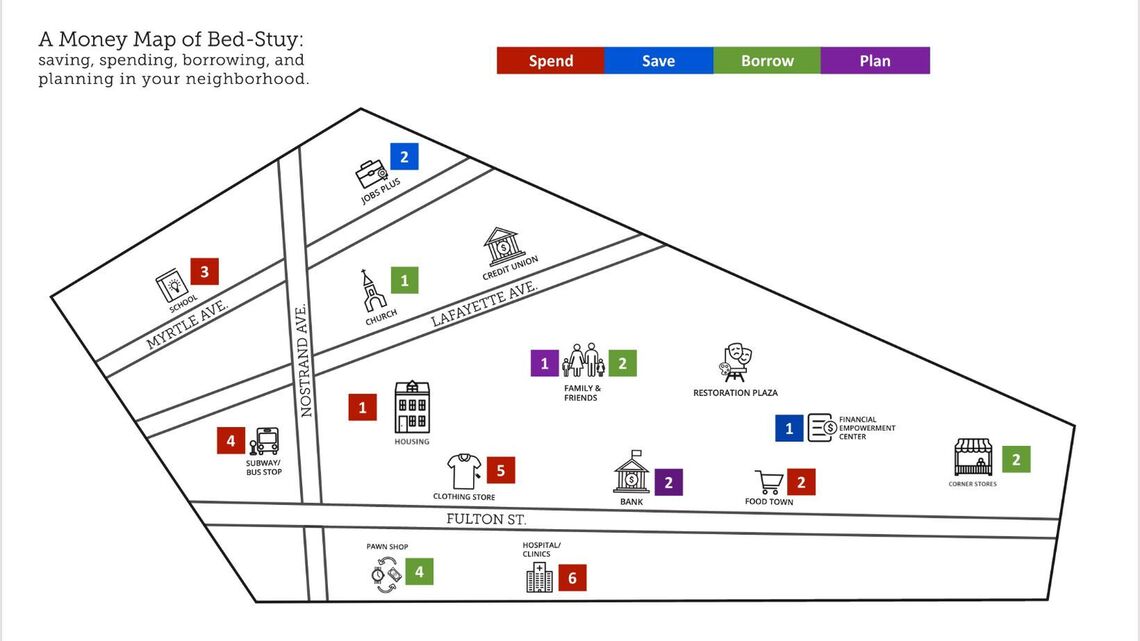Collaborative for Neighborhood Financial Health in Brooklyn
An increasing body of literature points towards the impact of neighborhood-level services – or lack thereof – on the social and financial mobility of its residents. Building on this momentum, the Office of Financial Empowerment (OFE) created the Collaborative for Neighborhood Financial Health, a collective of financial empowerment and economic development practitioners, to create a framework and strategy for defining and measurably improving neighborhood-level financial health.

Overview
In 2016, OFE selected Urbane supported by Bedford-Stuyvesant Restoration Corporation (BSRC), Local Initiative Support Coalition (LISC), and Center for Financial Services Innovation (CFSI), to lead the place-based research efforts in Bed-Stuy, including creating 40 financial health indicators.
Office of Financial Empowerment (OFE)
2016 - 2017
Mixed Methods Research
Financial Health Indicator Creation
Dollar Van Pilot Implementation
Strategic Policy Recommendations

Synopsis
The Collaborative for Neighbohood Financial Health represented a new approach that explicitly recognizes how place and community affect individuals’ financial health and opportunities. The initiative’s participatory and grassroots research methods, cross-sectoral collaboration, and development of community allies and place-based strategies to improve financial health offer insights for the financial health, community development, and asset building fields. The Collaborative consisted of two research teams that actively shared learnings but operated largely independently inside the communities in which they worked: the Bed-Stuy neighborhood of Brooklyn, led by Urbane, and East Harlem, led by the New Economy Project - two neighborhoods identified by OFE research as having some of the highest percentage of unbanked households.
In collaboration with Bedford-Stuyvesant Restoration Corporation (BSRC), Local Initiative Support Coalition (LISC), and Financial Health Network (formerly Center for Financial Services Innovation), Urbane was tasked with creating over 3-dozen indicators to measure and evaluate Bed-Stuy's financial health; work with community groups and local stakeholders to collect baseline data; develop and implement an intervention in Bed-Stuy that can positively impact one or more indicators.
Over the course of 6 months, Urbane led the efforts to interview over 25 stakeholders, including church pastors, school principals, NYCHA residents, small business owners, and service providers, and conducted three charrettes with 45 participants to provide insights and inform the indicators relevant to Bed-Stuy's most underserved communities. Through this workshop series, residents revealed barriers to financial health and stability, including a lack of formal and informal safety nets; inadequate support services; and poor social and physical infrastructure to support the equitable growth of the neighborhood. The charrettes also provided a venue to begin brainstorming the intervention.
In April, the team launched a commuter van that connected Northern Bed-Stuy to the neighborhood's main thoroughfares, such as Fulton Street, Nostrand Avenue, and Bedford Avenue. The van, which ran twice-daily three times per week for a total of two months, served 182 unique riders and connected 142 residents to additional services to secure housing, employment, and government benefits. Its success prompted BSRC to extend the van through the summer with the potential to expand its services into neighboring areas.
The final report includes findings from the commuter van intervention to determine whether the further investment can address strategic shortfalls preventing's residents of these communities from achieving financial stability. Additionally, it documents the process of the Collaborative, which is the first of its kind, to provide a framework for other communities and replicate and scale the intervention. The paper was presented at a convening, Exploring How Neighborhoods Build Wealth, in December of 2017.
The final report can be viewed here.
Subsequent to the report launch, OFE launched a Neighborhood Financial Health Index Map tool, based on the research from the pilots initiated in Bedford-Stuyvesant and East Harlem, that explores the financial health of New York City neighborhoods across five distinct goals. The map assigns every neighborhood an index score from 0 to 10 (10 being the best) for each neighborhood financial health goal based on indicators for how well the neighborhood fulfills the goal. The map also displays an evaluation of overall neighborhood financial health that takes into account all five goals and neighborhood demographic information.
"We decided to focus on mobility and transportation since focus groups, surveys, and interviews with residents and other stakeholders showed that this was considered a major barrier in terms of maintaining employment. By coming up with a more cost effective way to getting to and from work, we provided direct benefits to our residents most in need."
- Tracey Capers, EVP, Chief Program Officer on the dollar van pilot
